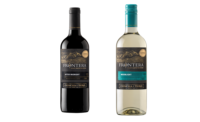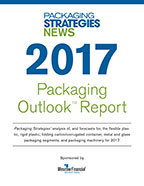Editor’s Note
The Dark Side
Retailers assist in overloaded supply chain.

No matter where you live around the world, you might have seen “dark” stores — retail giants that have moved from selling products in-store to creating a fulfillment center in the physical store space. The goal is to take pressure off the supply chain and getting customers their products in a timely fashion that still helps mitigate the spread of COVID-19.
During this second wave of the pandemic, many stores have adjusted their hours — either shortening hours or rearranging them. For instance, seniors and those with compromised immune systems have a specific time to shop in many retail stores large and small.
Walmart has taken a step further by dissipating large crowds, calling off the Black Friday frenzy that typically begins hours after Thanksgiving dinner. Instead, big box retailers are opting for smaller, more frequent promotions, elongating the holiday shopping season instead of creating spike days that encourage large waves of shoppers, whether in-store or online. This is also beneficial for supply chains, many of which are still recouping after the first wave of inventory clean outs, panic buying and empty shelves.
Supply chains are severely overworked right now, says Tom McFadyen, CEO of McFadyen Digital. “While some companies are opting for a direct-to-consumer approach to account for a pandemic that’s forced a contactless society, it’s putting strain on an already overstressed supply chain.”
Dark stores are giving CPG supply chains some much-needed relief in a year when logistics have become much harder to manage. Companies like Whole Foods have found success in implementing dark stores. This way, CPG companies can focus their distribution efforts on delivering larger shipments to fewer locations. For instance, it’s much easier for Coca-Cola to make one large shipment to a local Target in New York City that’s being used as a temporary fulfillment center than go the direct-to-consumer route to make smaller shipments to hundreds of customers. By outsourcing some of the distribution process to others (in this example, Target), CPG companies can take that work off of their plate and share the burden with others who can more easily handle that distribution on a smaller scale.
Post-COVID Retail
When asked if retail environments will go back to operating the same as they did pre-COVID, McFadyen says that they won’t be able to go back to having a physical store only.
“Fewer retailers have been able to make just brick-and-mortar operations work, and this will especially be true after this pandemic. Physical stores and online platforms must work in tandem to improve customer experience and sell more products, so it makes sense to leverage both for the most success.
“Not only have digital channels become popular for retail and grocery, but it’s now a vital driver of revenue that complements the physical store. And since consumers are used to predominantly using online channels now, these habits won’t change overnight, even when the pandemic eases up,” he says.
Right now, online is the first point of product discovery, especially as more people shop at home. In fact, Walmart saw over a 70% increase in its ecommerce sales in third-quarter earnings, and online grocery is now accounting for about 15% of all grocery sales in America.
While many shoppers typically browsed online first before making a purchase at the store, this isn’t the case right now. That said, ecommerce needs to go a step further. If shoppers aren’t convinced or comfortable with purchasing a product online, they might not ever buy it. So while physical foot traffic continues to be low, retailers should focus on its ecommerce product pages. Think about what Amazon provides: several high-definition images of the product, details of ingredients or parts, directions on how to consume the product and an abundance of reviews and ratings. While these features can’t be replicated overnight, there are several platform solutions that can help retailers.
Also, take a look around at our new, cool and easy-to-read digital format. We hope you like it!
Happy New Year and I hope you enjoy this issue,
KRISTEN KAZARIAN
kazariank@bnpmedia.com
Looking for a reprint of this article?
From high-res PDFs to custom plaques, order your copy today!








